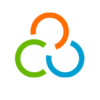Invitation for Tender -Database System at SHDEPHA+Kahama
Job Overview
INVITATION FOR TENDER No. SHDEPHA +/KHM/2022-07/HQ
M&E SYSTEM
TECHNICAL TERM OF REFERENCE (ToR) FOR THE DEVELOPMENT/DESIGN OF THE PROGRAM DATABASE/ONLINE SYSTEM FOR DATA COLLECTION AND REPORTS PRODUCTIONS
PROJECT NAME: Database System
BACKGROUND,
SHDEPHA+ is an acronym for Service, Health, and Development for People living with HIV/AIDS. It is a national non-governmental organization, registered on 21 November 1994 with registration number SO 8216. SHDEPHA+ originated from the initiatives of fifteen people living with HIV/AIDS whose goal was to create a network and to mobilize resources to help people living with HIV/AIDS and to fight the spread of the disease. Although originally focusing on people living with HIV/AIDS, over the years SHDEPHA+ has expanded beyond HIV/AIDS and related issues to other development interventions and now covers both infected and affected by HIV/AIDS with over 65 branches countrywide. Each branch of SHDEPHA+ works independently, developing, managing and implementing its own projects; though all branches share one constitution and registration.
STATUS OF THE INFORMATION FLOW
The organization works on various indicators both donor and internal. There is an Indicator Reference Sheets, which provides relevant details for each indicator by Project. The tool uses both national and internal tools to capture both client level or aggregate data. All these are currently collected in hard copies and organization face a lot of challenges during data collections, data compilation and data reporting to the next level due to incompleteness, delays, missing information and shortage of tools in some geographical settings.
Current practices in Data management plan
SHDEPHA+ uses defined tools and protocols to conduct regular and rigorous project performance monitoring and evaluation that includes routine collection of data during project implementation and inputting the data in the database, which enable generating timely, reliable, and gender disaggregated data for annual reporting. The protocols are developed for each data collection tool and used to guide data collection and help collect quality data that is reliable, valid, consistent, and of high integrity. SHDEPHA+ Kahama prioritizes continuous engagement of local government authorities at regional, district, ward and village level as meaningful partners in project monitoring, and will conduct joint support supervision visits on monthly and quarterly basis to ensure quality programming.
Data collection
SHDEPHA+ employs various data collection techniques, including monitoring forms, interviews, and questionnaires. Onsite level data at community level, health facilities and school are collected from the deployed project community volunteers, health care workers, teachers, local government officers and gender desk officers.
The M&E Unit of SHDEPHA+ ensure that all the data collection tools include all data elements that are required for disaggregation and reporting as per the donor, GoT and other stakeholders requirements. All project staff, service providers and other beneficiaries are required to collect data at projects areas and are oriented and trained on the whole process of data collection including but least tools filling, data quality checks, validation, storage, reporting and management when at field level.
Data Entry and Analysis
SHDEPHA+ uses paper-based reporting systems for clients recording. Project Electrical recording/ database are used to allow real-time data capture, remote submission and aggregation of data to enhance Community-based referral systems across SHDEPHA+ services. Web database, Grant Management systems, Epi info database, info link, field link, Power BI, advanced excel are both means of Case based database for reporting employed by projects as per donor requirement.
The Goal of this RFP is to ensure that SHDEPHA+ Programs are on track to meet its overall goals and objectives, the indicators to be measured against targets set, will either reflect the underlying assumptions, secondary data, donor or government requests made in program design about what each activity will likely achieve.
To achieve the above goal SHDEPHA+ for easy service delivery to the clients, resorts its efforts to establishment of the robust online database, which will replace all the activities for data collections currently done manually.
SHDEPHA+ enthusiastic to support the implementation of its M&E framework via online system which can be accessed from anywhere in the world using any device (PC, Laptop, Tablet or mobile) having internet access. These features will help us to establish a system that will provide day to day monitoring of SHDEPHA+’s implementation, collect the missing baselines, track the progress on achieving its results and provide reporting.
OBJECTIVE
The main objective of this TOR is request for support to design a health information system in DHIS 2 for entry, analysis, reporting and performance tracking of the project’s internal indicators in order to inform decision-making and project interventions.
TECHNICAL TERMS AND CONDITIONS/ SCOPE OF WORK
- As per SHDEPHA+ guidance, the consultant will ensure throughout the development, training and maintenance of the software package for Program Database System in line with the context of Tanzania Health services delivery systems and geographical localities.
- This consultancy will aim to design an Information System for the project with the following:
- A proper data management system to capture and store data from all project’s routine activities. The system should be able to capture data from internal project activities and summary information from DHIS 2 on project indicators.
- Functionality to monitor and track work plan activities; summarizing completed activities and those not completed in a certain time period.
- Reporting capabilities; customizable as needed to report on project’s routine activities
The activities include:
- Discuss with project’s M&E focal person the conceptual design behind the database, queries and reports expected prior to configuration of the database. See Table 1 for some system requirements
- Design a data dictionary; standardized for variable names across projects’ routine activities to ensure that all variables referring to similar measures (questions) are named uniformly across datasets
- Tools used for the data collections – This is significantly important when designing the system to ensure that all the indicators captured through those tools are well included and correctly aggregated for reports production
- Types of the information required the system to capture – both aggregate and individual level information’s perhaps to allow you work on any information you need for whatever report you may want to provide to your supervisors or donor or government.
- Frequency of Reporting – This will also be factored in as there are reports that you may need to share on daily basis, others on weekly basis, others on monthly basis or quarterly reports respectively.
- Hierarchy of reporting – This is another issue that will be included to make sure that you can share your reports with different levels eg. if working at the community level the lowest point to store or capture your data is a ward, then facility for those
clinical interventions indicators, district levels and regional levels for aggregate information - Training – Train the project members in the management of the database (how to update, edit and delete information, add fields and produce new reports as needed). Provide capacity to expand database use.
- The training will involve all those system users including System Administrator, Data Administrator, Network Administrator, Managers and other end users specified by the client.
- The list of master trainers will be provided by the client one week before the trainings begins. A minimum of two representatives from each division of organization will be trained as master trainers on the usage and operation of the System/database.
- On completion of the training, the master trainers and Users will be performing a rigorous test on the system and submit their observation(s). The observations will cover the following topics: · Comments on the training – lecture, coverage, materials & lab sessions; · Comments on User Interface and suggestions for betterment; ·
- Comments on operational flow; · Response time of the system; · Bugs encountered and error management facilities; · Data validation and security measures.
- Mobile Apps Integration – As per the current era the system will be developed in such a way it can allow the usage of the mobile apps and other contemporary reports collections gadgets,
- System Hosting and Maintenance – Will be issues that will need to your attention and clear commitment how will this be happening to keep everything running and keep working, as you scale up might need to add other variables the system.
- Related to this are issues of software updating and other relevant APKs for the Apps if that will be one of your interest in the near future
- Database back-end design: Work in consultation of the M&E focal person in developing the database’s underling forms, sheets and tables
- Database front-end design: Work in consultation of the M&E focal person to determine the preferred interface for customizable display of data
- Set up the system project’s server
DOWNLOAD THE ATTACHMENT HERE TO READ MORE AND HOW TO SUBMIT YOUR TENDER





